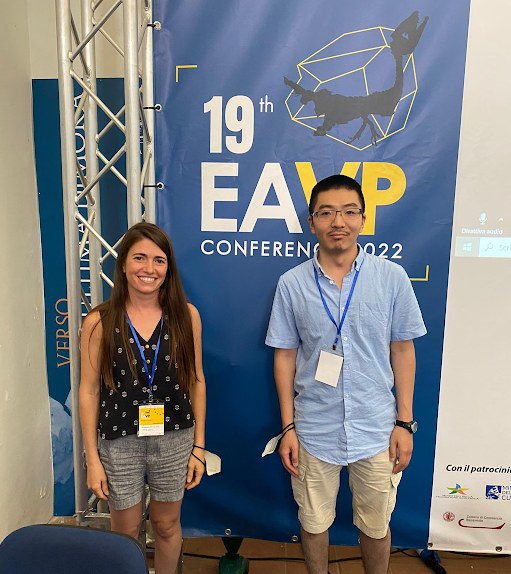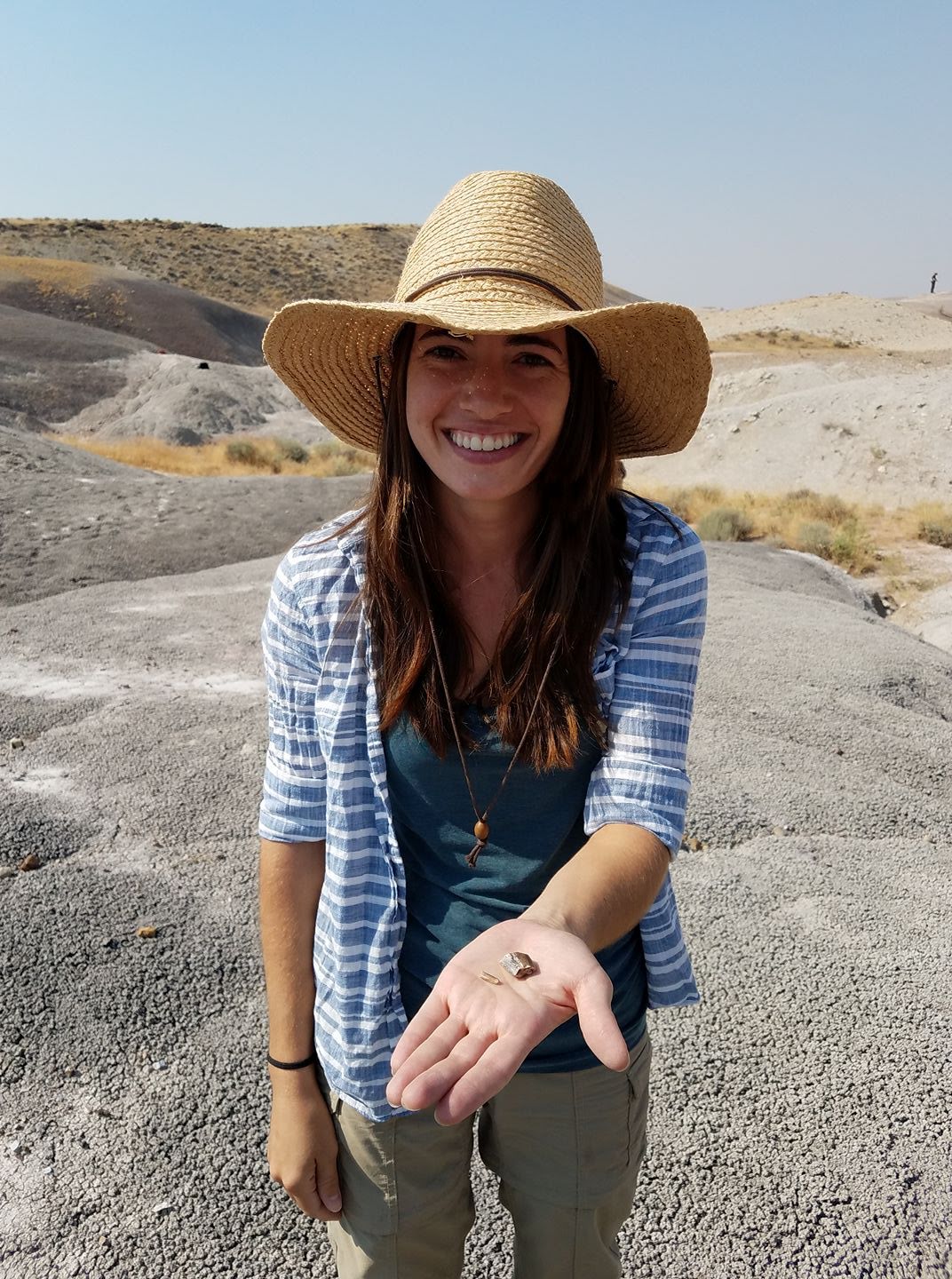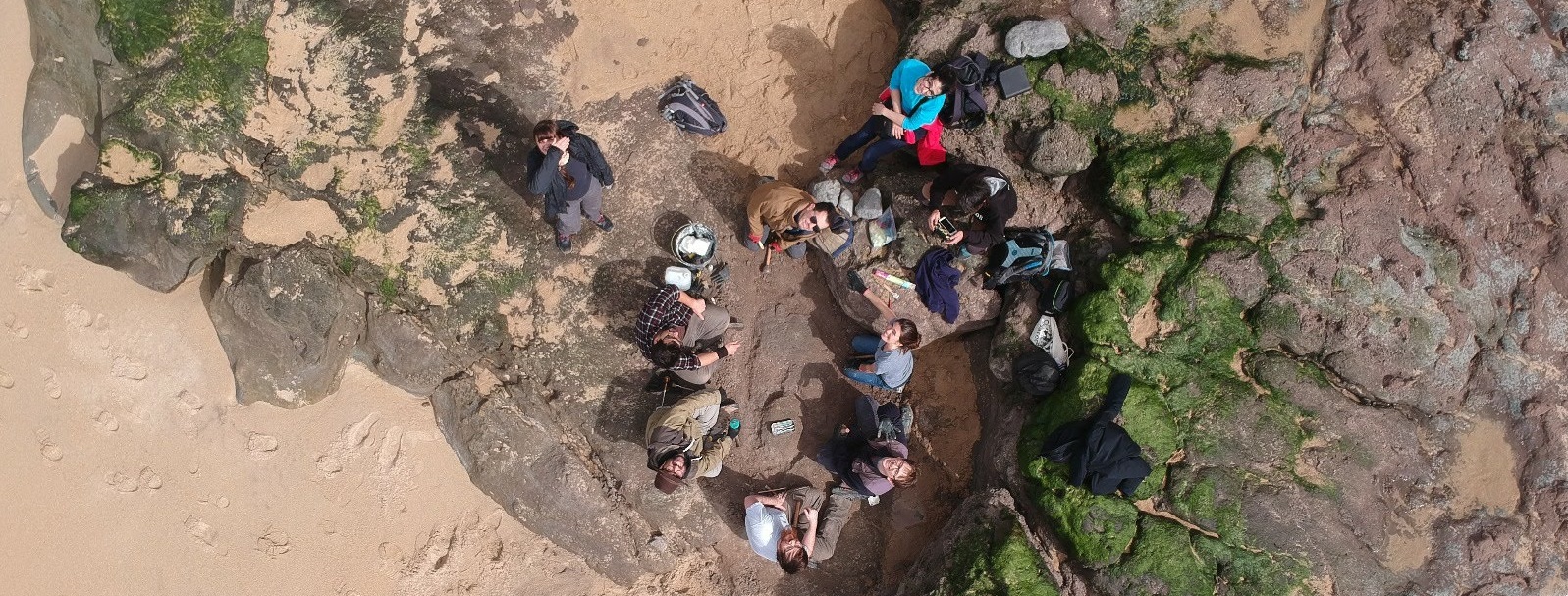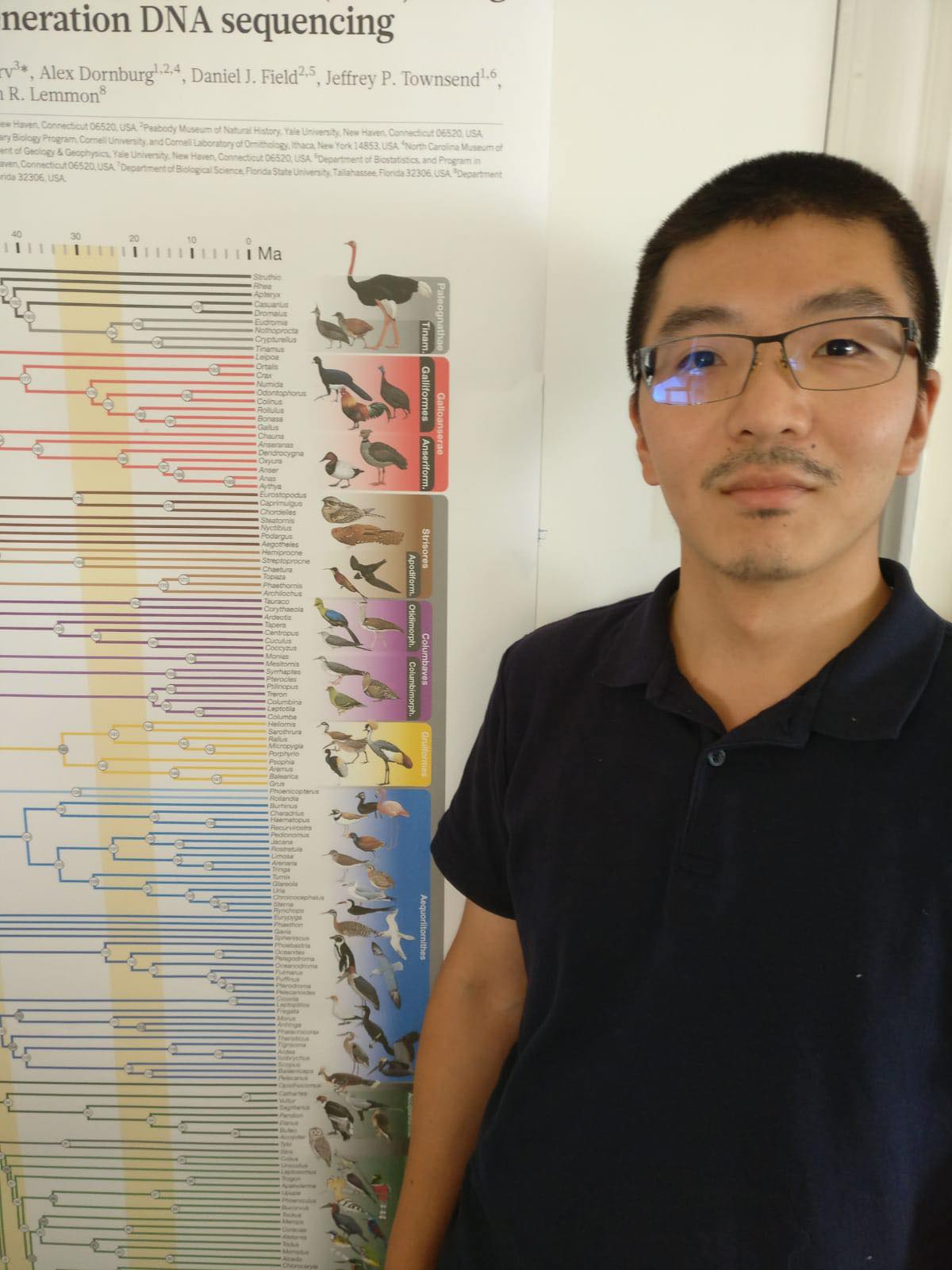
PeerJ Award Winners (Credit: Feiko Miedema)
The annual meeting of the European Association of Vertebrate Palaeontologists (EAVP) is a conference that is organized each year at a different location. EAVP hosts original research on all aspects of vertebrate palaeontology, from fish to dinosaur, from ecological modelling to fossil footprints.
Benevento in Italy was originally scheduled to host EAVP in June of 2020, but after its cancellation due to the pandemic and jointly hosting the online 2021 iteration, the 19th EAVP annual meeting finally took place in Benevento from 27th of June to 2nd of July 2022. After the 2021 online experiment, this became the first EAVP meeting organised in a hybrid format, with delegates attending both in-person and online. Continuing the EAVP’s pioneering work of exploring ethical issues in vertebrate palaeontology – begun in their 2016 meeting in Haarlem – this meeting saw a workshop exploring systemic racism in palaeontology, alongside the regular women in palaeontology session and sessions on macroevolution, vertebrate ichnology, insular mammals and mammalian ecosystems, as well as use of Blender 3.0 by palaeontologists.
With 195 attendees (roughly 1/3 online – most of whom were presenting their work remotely) and 162 abstracts submitted, the conference was a great success. Moreover, for those interested, the abstract volume and the field guide are to be published in the PalaeoVertebrata journal. Next year’s meeting, celebrating the 20th anniversary of the Association’s foundation, will be hosted by the Institut Català de Paleontologia Miquel Crusafont (ICP) at Sabadell, just outside Barcelona. For more information, see www.eavp.org.
Matteo Belvedere, Organiser
*****
Alexandra E. Fernandes PhD Candidate at the SNSB-BSPG, Germany.
 Can you tell us a bit about yourself and your research interests?
Can you tell us a bit about yourself and your research interests?
I began volunteering for museums in paleontology when I was 14 years old. Over the years I have been fortunate enough to work with many wonderful institutions, even participating in fieldwork excavations on 5 continents, and working with a large variety of fossils while performing laboratory preparation work. I became particularly interested in pterosaurs throughout the course of my Masters degree studies in Lisbon, when I was working on a specimen in the lab that had just come in from the field, and I began to really marvel at the physical fragility of their bones (despite their being such strong animals), and how exceptional the conditions can be for their preservation.
What first interested you in this field of research?
I think the feeling of discovery is something that really resonates with everyone in paleontology. When you find something, no matter how big or small, you really feel like you are unearthing these great secrets, and when you realize what that fossil had to endure to make it this far into its future, it’s very awing. On top of that, you then get to contribute and develop more pieces of the evolutionary puzzle, build on the ideas put forth by brilliant colleagues, and get to enjoy a real camaraderie collaborating with your peers in the scientific community.
You won the Best Poster award at EAVP 2022, can you explain the research you presented?
I presented a poster that introduced a new Late Jurassic gnathosaurine pterosaur specimen that was found in Portugal by a friend, Filipe Viera, and which myself and the team at the Museu da Lourinhã were lucky enough to be able to excavate (under the sand level of a beach in winter, and against a rising tide, which turned out to be a lot of fun). The poster exhibited the fossil and its associated information against a beautiful illustration created by Jason Brougham, and although the research on this particular specimen is still ongoing, we hope to have our research finished and published by the end of this summer.
What are your next steps?
The research paper on this fossil is still in development, so I cannot say too much just yet, but myself and my colleagues are hard at work writing up the specimen at the moment, gleaning as much information as we can from the fossil, and really learning a lot about gnathosaurines. One of my co-authors, Victor Beccari, is also doing some amazing digital 3D work, which will give a lot of insights into the group (literally AND figuratively). We were also already hoping to publish our results in PeerJ (prior to winning this prize), so exciting
things are ahead!

Pei-Chen Kuo PhD Candidate at the University of Cambridge, UK.
Can you tell us a bit about yourself and your research interests?
 I am Pei-Chen, and I am currently a PhD student at the University of Cambridge. I did my undergraduate degree in geoscience at the National Taiwan University and finished my master degree in Palaeontology & Geobiology (MScR) at the University Edinburgh. I am interested in the evolution of specialised anatomical adaptations, especially on the cranium elements, and try to understand how their morphology changes through time. For my PhD project, I am investigating the evolution of morphology in the avian feeding apparatus, employing sophisticated geometric analyses to incorporate living and fossil birds into a single evolutionary framework.
I am Pei-Chen, and I am currently a PhD student at the University of Cambridge. I did my undergraduate degree in geoscience at the National Taiwan University and finished my master degree in Palaeontology & Geobiology (MScR) at the University Edinburgh. I am interested in the evolution of specialised anatomical adaptations, especially on the cranium elements, and try to understand how their morphology changes through time. For my PhD project, I am investigating the evolution of morphology in the avian feeding apparatus, employing sophisticated geometric analyses to incorporate living and fossil birds into a single evolutionary framework.
What first interested you in this field of research?
I have had a strong interest in macroevolution since I was in undergraduate. Specifically, I am interested in how specialised anatomical adaptations evolve through time and how these characters are influenced by the mass extinction. The bone element we are focus on, quadrate, has been overlooked for a while, and there are relatively few papers focused on this bone. Therefore, I feel exciting to work on this project, exploring avian quadrate morphology and its evolutionary process.
You won the Best Presentation award at EAVP 2022, can you explain the research you presented?
My presentation at the EAVP 2022 was on quantifying shape variation of galloanseran (chicken-like birds and duck-like birds) quadrates to understand evolutionary processes and biomechanical changes in this clade. We have facilitated the first 3D quantitative morphological analysis on both extant clades and fossils. The result in this study shows that ancestral state reconstructions based only on modern quadrates might not recover plesiomorphic features observed in stem groups and instead seem to represent the average shape derived from the extant dataset. Therefore, I strongly encourage adding fossil taxa into the dataset for ancestral state reconstruction.
What are your next steps?
Built on our understanding from the landmark analysis of Galloanserae, I am establishing a landmark scheme for the quadrates of all major clades of extant birds to estimate the shape variance of avian quadrates. And then, I can start to test some hypothesis, such as the links between morphological changes in the quadrates and dietary/ecology characters.

